Why Jerusalem Chapel was built and extended
The following text is from a hand written Jerusalem Chapel part history, recently discovered but not dated.
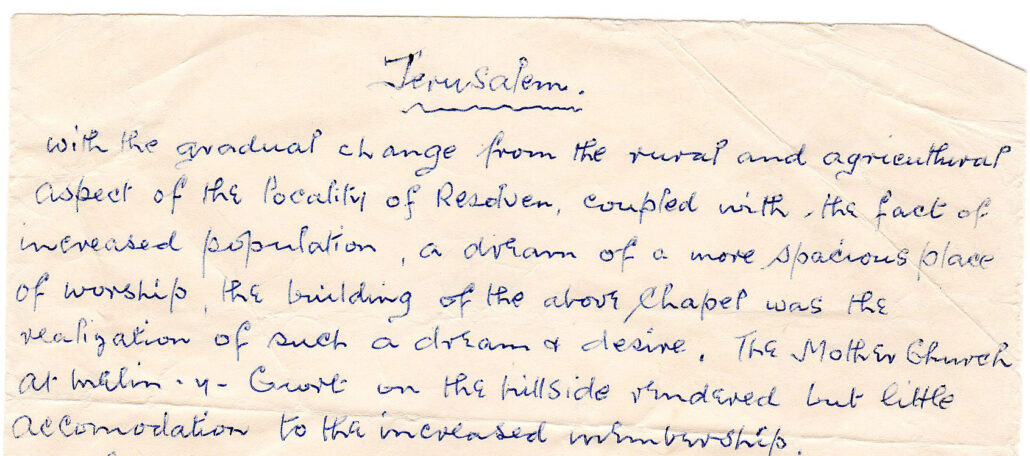
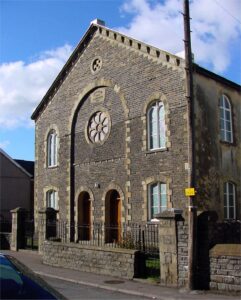
For ease of reading, the hand written has been transcribed and the photographs added to the text :-
“With the gradual change from the rural and agricultural aspect of the locality of Resolven, coupled with the fact of increased population, a dream of a more spacious place of worship, the building of the above chapel was the realization of such a dream and desire. The Mother Church at Melin-y-Cwrt on the hillside rendered but little accommodation to the increased membership.
Therefore, in the year 1875, the above place of worship was erected. The builders being “The Herberts” of Resolven, well known in the locality as experienced builders.
The Architect was one Mr T Thomas. Built on a field in close proximity to the Resolven Railway Station, it afforded good accommodation, having in view the possible increase of membership in the coming years. It had a seating accommodation of roughly 600, Galleried around to an adjacent line of its Pulpit it afforded good acoustics. Its design was of the strong traditional Nonconformist style which gave an expression of a strong character. Lit by oil lamps, the standards were fixed here and there in the building, with a responsible member attending to the duty of lights. This went on until 1902 when electric light was installed.
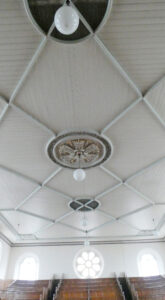

Its first Minister was The Rev. D. Gains Morgan, who came from the Ministry of Stockton-on-Tees, in the year of the erection of Jerusalem viz – 1875.
With a membership ranging from two to three hundred, the new Chapel was the pride of its worshippers. Induction Services were held in the early part of 1876, fifteen Ministers Officiating. The Foundation Stone (which can be seen today to the left of the entrance) was laid by a Medical Practitioner who practised at Resolven at the time viz – Dr. Albert Barnes Rees. The son of one of the most able Divine of the Nonconformist movement – Dr Thomas Rees, Cendl, (later of Swansea). One can almost be sure that the name Barnes Rees was adopted owing to the fact that the father Dr Rees was the Author of a most laborious translation into Welsh of the Commentaries on the New Testament by a Rev. Barnes of Philadelphia, America.
This point is very interesting concerning the foundation stone. Dated June 1875. The Church prospered well for years under the Ministry of the Rev. D. G. Morgan – who proved to be one of outstanding character, strong and influential, with a personality which was rare, with his duties at the Church, he took official part in all the main organizations of the village, such was the privilege of Jerusalem!
Co-operation and peaceful administration were most wisely practised. The cause held in high esteem throughout the adjoining areas of the Independent Movements.
Various functions incurred a standing debt but with the courageous spirit of its Minister and the willing spirit of its members, the difficulties of finance were overcome.
The Church was blessed with ardent, true, and honest deacons for a number of years, the cause flourishing with the times of industrial progression. They also experienced bitter times of fluctuation. They gave to the Cause freely of their earnings, and peace reigned for many years. Members paid for their seats periodically; numbered such as to be the marked seals of the families. They even collected the payments from seat to seat in the early history of the Church. Various functions were held to defray costs, such as details of renovation etc.
The singing element of the Church members proved very efficiently of praise rendering, augmented by a small harmonium, plus zeal and fervour, the Services were a source of blessing and concord of hearts. Many practitioners were employed as organists from time to time, unpaid, they contributed freely to the Cause. Choral rendering for Cymanfa purposes which were held at Neath viz – Maes yr Haf Church and the Gwyn Hall.
Page 4 of the original hand written history is missing.
With our main interest in the now main Church at Jerusalem, we would mention many of the old stalwarts of the Cause. The Church was blessed with fine Deaconery, a band of true and honest men of faith drawn from the ordinary ranks of life. Scanning the Minutes Book of the years from 1875, to the present one is very impressed of their zeal in very arduous times. They kept their Faith under some distressing periods, general remarks suffice for the present, their number being many under the guidance of their very wise Minister – Rev. D.G. Morgan (as aforementioned) up to his untimely death in July 1898, when the Church, and the locality suffered a bitter loss.
There were faithful Secretaries, Treasurers, Trustees in the Administrative section. Capable men as Organists such as Dr Rhys Herbert, Resolven (later of America). Wm Thomas, the local grocer, as the Precentor of the Church for years. His services with the Choral renderings and the “Band of Hope” movement cannot be forgotten. Mr Wm Davies, the new Precentor rendered service of great value in the performance of Oratorios for a number of years.
Great praise is due to these honest workers of the Cause at Jerusalem.
Special mention should be made of the service rendered by Mr R W Morgan, Resolven, as Organist for the long period of 60 years.
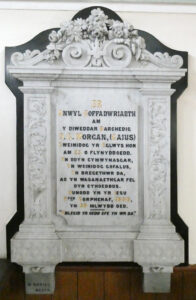
Under the Ministry of the Rev. D G Morgan and his successor, The Rev. R E Williams one cannot praise his good work too highly, especially so when one considers his regular attendances to the Church’s various meetings and that his services were a labour of love for many years. One is compelled to state also of the last two mentioned, that they did not confine their labours to the work of the Church as such, but were an asset to the locality in their capacity as musicians. After the death of their Minister, D G Morgan in 1898, Jerusalem was devoid of a Minister for 4 years.
With the coming of the succeeding Minister, The Rev. R E Williams who came from Cilfynydd to take over the pastorate of Jerusalem, the Church was renovated in 1902 – 1903. Opening ceremony took place in 1903.
The Architect was Mr Cook Rees, Neath.
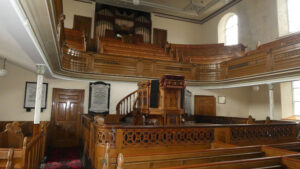
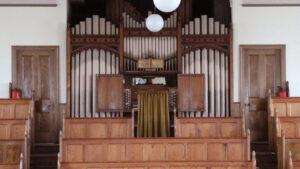
The building was extended to seat 900 approximately, with an addition of a gallery behind the previous Pulpit wall for Choir service. A new Pipe organ was installed, and a spacious Vestry Room was added to the renovation.
The cost of all this addition reached the sum of £2,000, which in a few years was met by ardent work.
These facilities rendered favourably to Choral work in the performing of Oratorios, etc. under the leadership of the aforementioned Mr Wm T Davies, Mr R W Morgan being Organist. During the period of renovation the services of the Church were held at Resolven Council Schools. By this period, the membership of Jerusalem had increased to over 500. On various functions the Church was filled to its capacity, with an overflow of people especially so during the annual Cymanfa, (Festival of Song). These Cymanfaoedd are still held but without the aforementioned experience of a crowded Church!
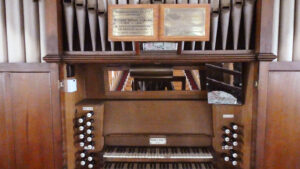
We should have mentioned that the Church Pipe Organ was opened by Dr. Hinton, London.
Organ recitals were given later, by the late Dr. Harry Evans, Dr. Caradog Roberts, also by a local organist Mr Willie Jenkins, Jerusalem’s second Minister was inducted in the year 1902, and held the Pastorate until September 1934.
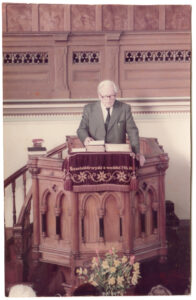
Its third Minister – Rev. Lynn T Walters, B.A. was inducted in July 1938, being his first ministry, and is the present officiating Minister.
To commemorate the Services of its first minister – D G Morgan and Mr W T Davies Precentor, two tablets were placed in a position both sides of the Pulpit with the corresponding dates thereon.
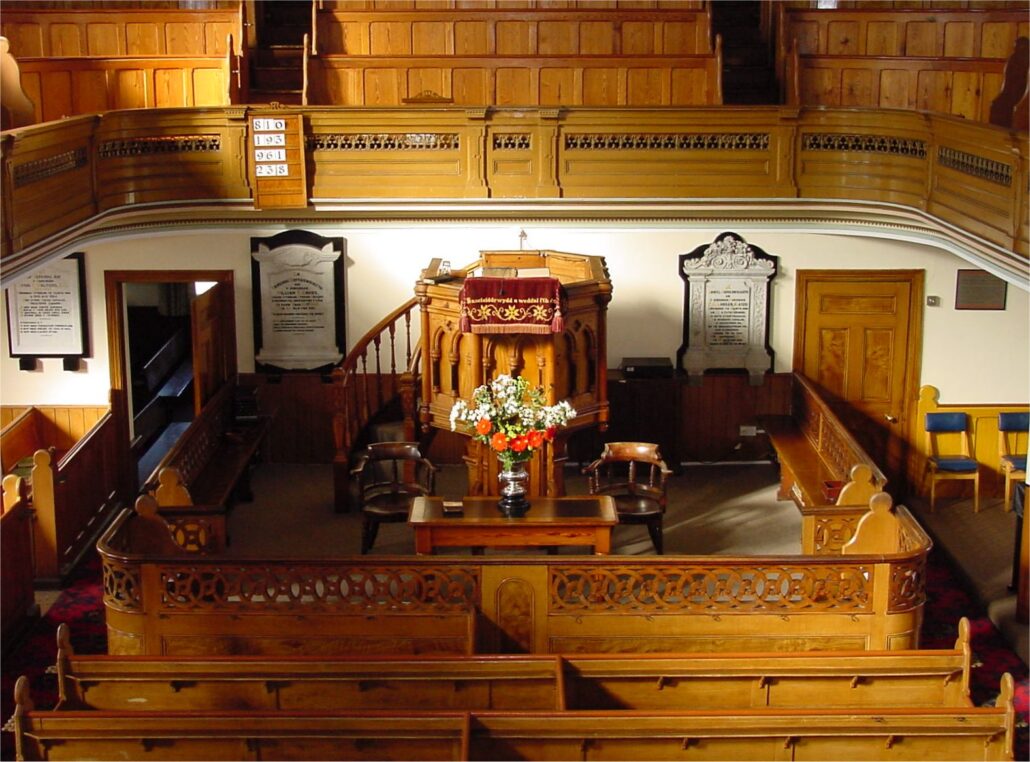
A Plaque was also placed on the Organ to commemorate the Organist, R W Morgan.
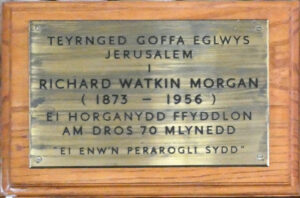
The present Organist is Mr Emrys Harries, Resolven who is also a Deacon of the Church.”
~ ~
This is the end of the hand written text.
Emrys Harries became organist after the death of R W Morgan, so the hand written script was written after 1956.
~ ~ ~ ~
